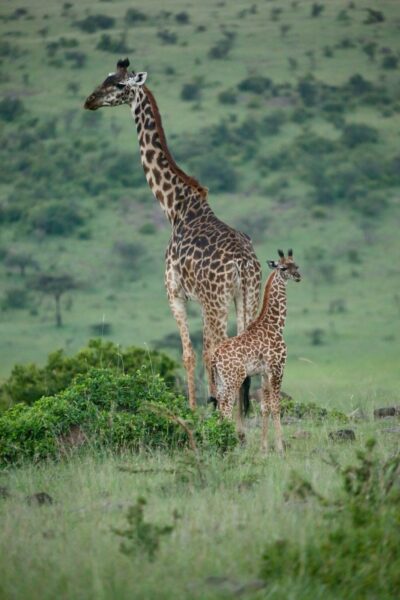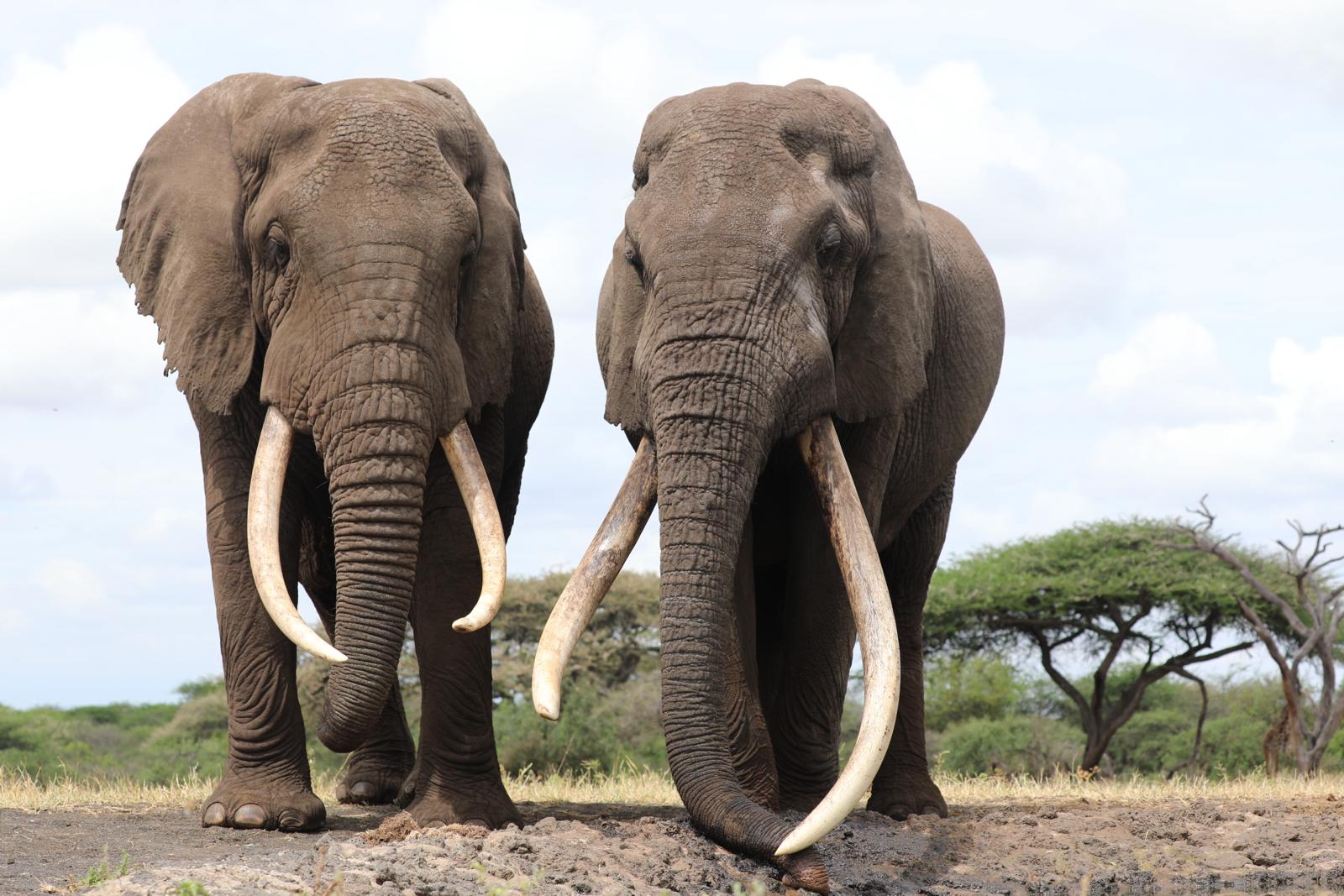For many, Kenya and Tanzania are synonymous with seeing the iconic Great Migration. However, these two countries both offer so much more than the chance to see massive herds of wildebeest and zebra crossing rivers and roaming in their annual pattern in search of greener grasses. Those focusing on the Great Migration and hoping to see an iconic river crossing will likely travel during high season in July-October. While I love traveling in high season, there are some great reasons to consider traveling during other times of the year as well! These so called “shoulder seasons” are what we call the periods of time between a region’s peak travel season and its offseason.
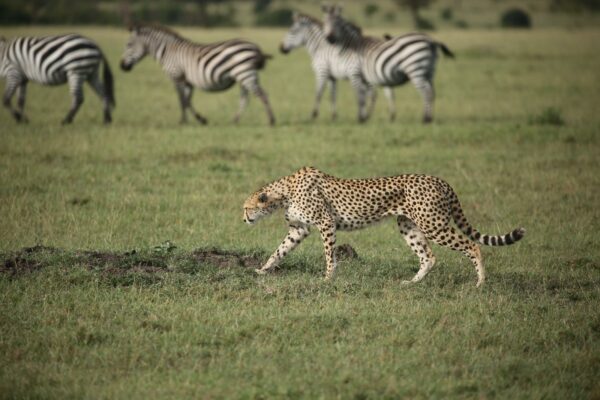
Value for Money
One reason to consider travel outside of high season is the excellent value for money. Properties are simply less expensive in the months outside of July-October. My favorite shoulder seasons in Kenya and Tanzania are November and early December as well as January and February. This time of year is often characterized as the short rainy season. You can expect to see a shower or two during your trip, but often you’ll get lucky with days of beautiful sunshine and absolutely epic game viewing in between. Generally, I recommend skipping December 20-January 10 if you have a flexible schedule, as this time of year will have peak season pricing due to the high demand of holiday travel. Some properties will even offer special rates like stay 4 nights, pay for 3! This is an excellent reason to consider shoulder season in East Africa.
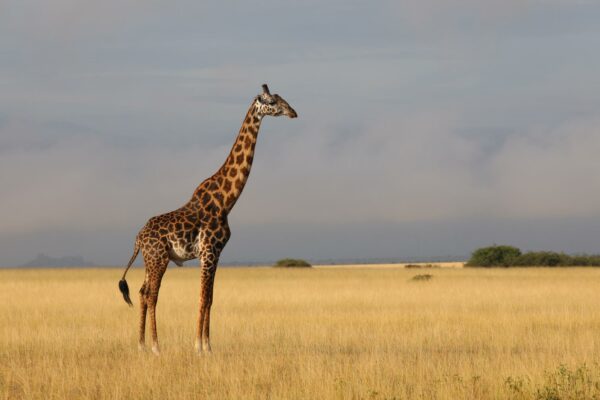
Avoid Crowds
Another reason to consider shoulder season is that camps usually aren’t filled to capacity. Availability can be more flexible, and you might get lucky with a bit more personalized service because there are less travelers in camp. Occasionally, you can even get upgraded to a complimentary private vehicle if there are extra guides and vehicles available. This is a huge value add!
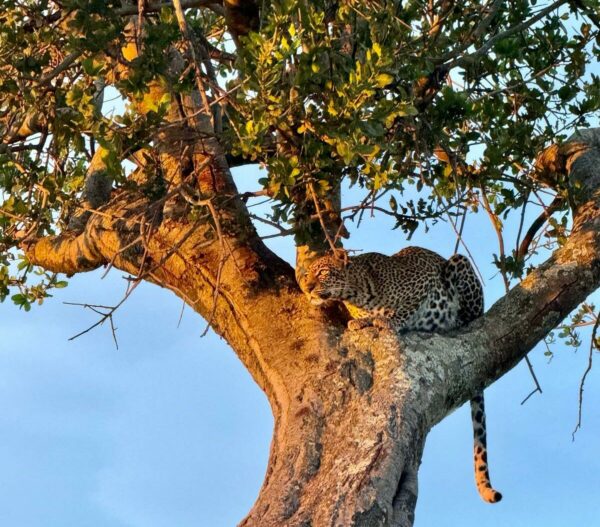
Animal Babies!
Finally, this season tends to be an excellent time of year to see baby animals! I recently had the opportunity to bring my husband to Kenya and it was one of my favorite trips to Kenya to date. We saw young cheetah, days-old zebra, newly born giraffe, baby antelope and lots of lion cubs!
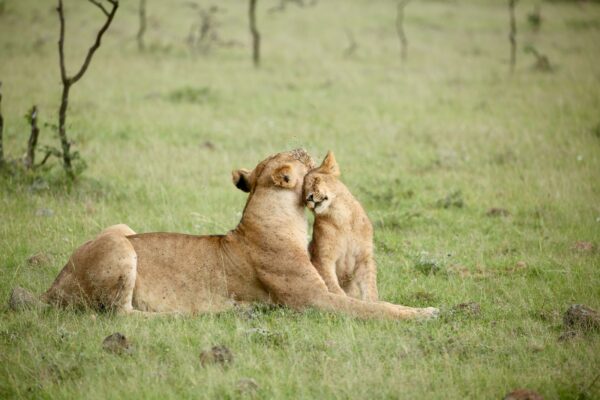
We did experience a few rain showers during our trip, but it had minimal impact on our incredible game viewing! We visited three camps and between them, we saw nine different prides of lions, 14 cheetah (many of which were adolescents still with mom) and we were lucky enough to spot the local zebra migration that happens in parts of the Masai Mara in February. We saw well over 100,000 zebras during our time in the Mara! We also got to see some of the big tuskers (elephants) in Chyulu Hills, such as the well-known male named “One Ton” for his massive tusks. (See the photo at the top for an idea of how big these tuskers really are!)
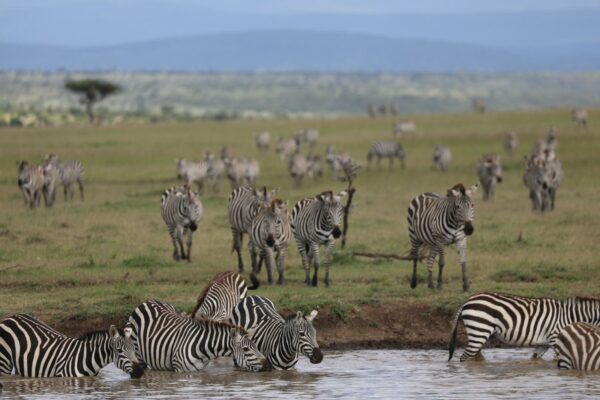
We couldn’t have asked for more incredible sightings. Each day was action packed! One of the most interesting sightings we had was finding lions at a kill. Hyenas were trying to steal parts of the carcass and even little jackals were braving their way into the mix for scraps! Those jackals were brave to approach the carcass with so many feisty lions around.
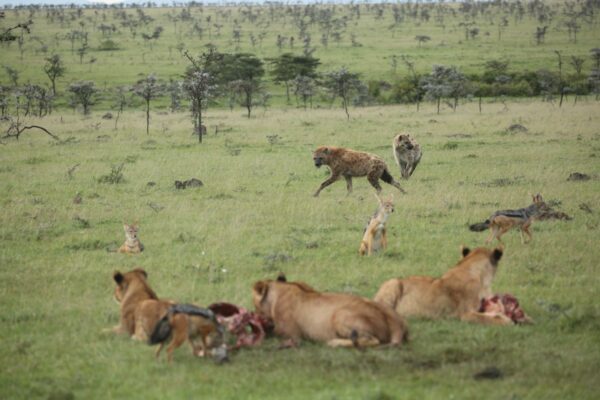
While game viewing can never be guaranteed, our epic sightings are evidence that the resident game is just as incredible as seeing the migrating herds!
Travel tip: If you decide to visit Kenya sometime between December and February consider pairing it with the southern Serengeti in Tanzania to see the Great Migration during calving season. Check out my colleagues’ blog for more on the southern Serengeti during this season.
